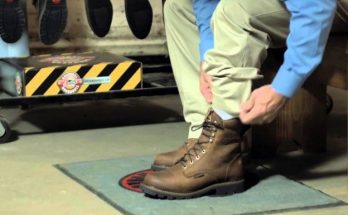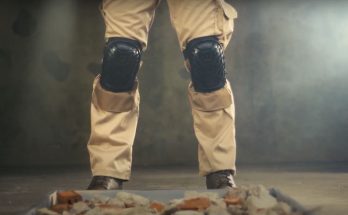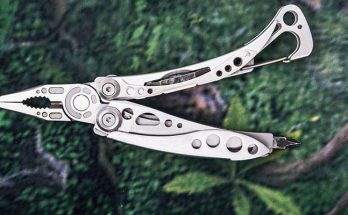If you’re still utilizing a wire nut to connect your electricity lines, it’s time to learn about the lever wire connection. It is a one-of-a-kind and straightforward cable splicing technique in which wire connectors allow you to safely and securely link electrical lines in two simple steps.
You’ll also discover how to choose the Best wire nuts for your unique requirements. The ten electrical connections mentioned below are the most excellent I’ve used in the past. You’ll also learn about the advantages and disadvantages of each wire connector in each review. Let’s find out with Derosa Electric in this article
Quick Comparision
| Image | Product |
|---|---|

|
Best Overall: TICONN T Tap Wire Connectors Editor's Rating: 9.7 Brand: TICONN Check Price |

|
The Runner-up: Kuject Solder Seal Wire Connectors Editor's Rating: 9.6 Brand: Kuject Check Price |

|
Best Security: HTCELLE Lever Wire Connectors Editor's Rating: 9.4 Brand: HTCELLE Check Price |

|
Best High-quality: ELECFUN Splice Crimp Connector Editor's Rating: 9.2 Brand: ELECFUN Check Price |

|
Best Budget: Amlits Waterproof Wire Connector Editor's Rating: 9 Brand: Amlits Check Price |

|
Best Value: Qibaok Heat Shrink Wire Connectors Editor's Rating: 8.8 Brand: Qibaok Check Price |

|
Best Connection: Sopoby Heat Shrink Solder Connectors Editor's Rating: 8.6 Brand: Sopoby Check Price |

|
Best Design: TICONN Heat Shrink Wire Connectors Editor's Rating: 8.4 Brand: TICONN Check Price |

|
Best Lightweight: Nilight Quick Splice Wire Terminals Editor's Rating: 8.2 Brand: Nilight Check Price |

|
Best Sustainable: Brightfour Wire Connectors Editor's Rating: 8 Brand: Brightfour Check Price |
Choosing the Best Wire Connectors
Twist-On Wire Connectors
The majority of home electrical wire connections are variants of the twist-on connector. The most direct essential twist-on wire connection is a cap with ridges running down the barrel and an interior square-cut wire spring. The banks provide a firm hold when you twist the relationship onto a pair of wires. The spring grabs and keeps the wires together when you turn the connection.
Standard twist-on connections are the most cost-effective and straightforward to install and remove. As long as they are not damaged, they are usually reusable. These are used to install receptacles, switches, and fixtures such as lights, ceiling fans, and other hard-wired equipment within an authorized electrical box.
Wing Wire Connectors
Wing wire connections are similar to twist-on connectors in function and use. Still, they include wings or tabs on the barrel of the cap that facilitate installation and removal faster and easier. If you need to make many connections, attachment wire electrical connectors might be a cost-effective solution to complete the job more pleasant and decrease hand fatigue.
Weatherproof and Waterproof Wire Connectors
Wire connections that are weatherproof and watertight are specialist, one-time-use devices. These twist-on connectors include a silicone sealant in the cap and protective fins or flanges covering the cap hole to protect the wiring from corrosion, dust, and moisture. Installation of outside outlets, light fixtures, and sound systems are typical home applications, but interior tasks such as bathroom exhaust fan installations are also possible.
Some of these connections may also be categorized as subterranean wire connectors, appropriate for below-ground wiring in applications such as landscape lighting. These direct-bury connections may employ a regular twist-on wire connector that fits inside a sealant-filled protective tube.
Weatherproof, waterproof, and subterranean wire connections that accommodate larger wires are ideal for commercial applications such as street or parking lot lighting and emergency lighting systems.
Push-In Wire Connectors
Push-in wire connectors are more expensive than twist-on or winged connectors, but they allow for very rapid and straightforward connections by simply putting the wires into the devices. They can alleviate hand strain caused by the twisting action necessary for conventional connectors, which is especially useful if you have many connections to make for a project.
Some of these devices feature a clear housing that allows you to ensure that the wires are fully inserted visually. Others include a check port that will enable you to test the connection without removing the connector. Push-in connectors are available in a variety of port counts.
If an existing connector has open ports, you can quickly add to the connection without rebuilding it entirely. Push-in connectors are ideally suited for solid wire, although they may also be used with low-strand-count stranded wire. They are suitable for various copper wire connections where twist-on connectors are used.
The connections may be removed by pushing and twisting the wire back and forth until it disengages. Undamaged push-in connectors are generally reusable on solid wire of the same or a bigger gauge, but not if they have held stranded wire – strands can become trapped in the connector and impede a satisfactory connection if the device is used again.
Aluminum/Copper Wire Connectors
While most wire connectors are only suited for copper wire, several are used with aluminum wire. Al/Cu wire connectors enable you to link aluminum and copper wire. These single-use connectors include separate ports that keep the wires isolated and an interior sealant to protect the cables from oxidizing. These connectors need the use of a specialist torque screwdriver to secure the connections with the set screws, but they may be used to repair aluminum wire.
Best Wire Nuts Reviews
What to Look for When Buying Wire Connectors
When I’m looking to buy a tool, I generally start with the brand. When it comes to the best wire connection, though, the brand is unimportant. It would suffice if a relationship met all of the requirements you require. Consider the following while selecting wire connectors:
Safety
Compliance with Product Safety Standards: Compliance with product safety standards is one of the first things you should check for in a wired connection. These components are intended to function with high voltages, and as such, they should be able to resist the power and heat flowing through them. To ensure the safety of your project, the connection brand you select should have been tested and approved by several product safety groups.
Shapes and Sizes
Connectors come in a variety of shapes and sizes. There are several types of connectors available on the market. Only tube-type connections are available for connecting two wires. T-tap connections are also available for connecting three wires. You may also get connectors that can link more than three wires if you’re wiring a lighting system.
Types of Connectors
On the market, there are various connections. That is why, before making a decision, you should first determine what you require. Butt connections, wire tap connectors, T-tap connectors, splice connectors, and heat shrink connectors are also available.
You may assess your requirements by examining your present system. Is it intended for use in automobiles? Or maybe for your house? Is it necessary to install it permanently? Is it required to be waterproof? If you are doubtful, it is better to seek the counsel of a qualified electrician.
Tools
Some connections must be installed with a crimper, while others may be installed with a heat gun. Some associations require both tools to guarantee a good relationship, while others do not. That is why, before beginning an installation project, you must first identify what you require.
If you are a DIY professional with comprehensive tools, you may not need to think about this. However, if you are a newbie who lacks tools, you should examine the product’s necessary tools. Some connections even require the use of specialized equipment for installation.
Material
It refers to the substance used in the core of the connection to carry electricity. Is it composed of copper or high-quality brass? Is there a solder ring that, once set, offers a good relationship? You must understand this content to maintain proper electrical flow in your system.
How Do You Connect Three Wires
Wire nuts might be used to connect two or more wires traditionally. A three-wire connection, on the other hand, is far more convenient.
You may utilize a three-conductor splice connection, which requires just that you remove the wire end and place it into the connector. You may also use a T-tap wire connector, in which you just insert the wire and close the lid.
Are Push-in Wire Connectors Better than Wire Nuts?
The wire nut and the push-in wire connector both offer a good connection. These join the wires by establishing a secure connection between the two individual cables. These, however, have a different use.
Wire nuts require correct wire stripping and splicing techniques to establish a good connection. Push-in wire connections, on the other hand, are simpler to install.
Push-in wire connectors do not require any equipment. Other wire crimp connections need the use of a heat gun, a crimper, or both. Nonetheless, the main benefit of wire connections over wire nuts is their simplicity of installation. Both, however, would offer a secure and stable connection if adequately built.
Are All Wire Connectors Insulated?
There is also a non-insulated wire connection and terminal type, mainly used for wiring lines that are not at risk of short-circuiting when they come into contact.
When compared to insulated terminals, these non-insulated connections and airports are also less costly. Using an insulated wire connector, on the other hand, is far safer than using a non-insulated wire connector. It has a tube covering the barrel hole, making it safer despite contacting other wires.
Do All Wire Types Work With Every Connector?
Most wire connectors can accommodate any wire. However, some are not advised for use with fine-stranded wires. Some crimp-style connectors can join this sort of wire, although their grip may weaken with time, particularly if the wire moves or vibrates.
Conclusion
Nowadays, using insulated wire connectors is the quickest and easiest way to join a wire. There is a wire connector suitable for joining a solid wire, a stranded wire, or both.
You should examine your system if you want to locate the best wire connections for your application. If you are unclear, you can refer to the criteria I have provided or consult with a qualified electrician about your unique design.



